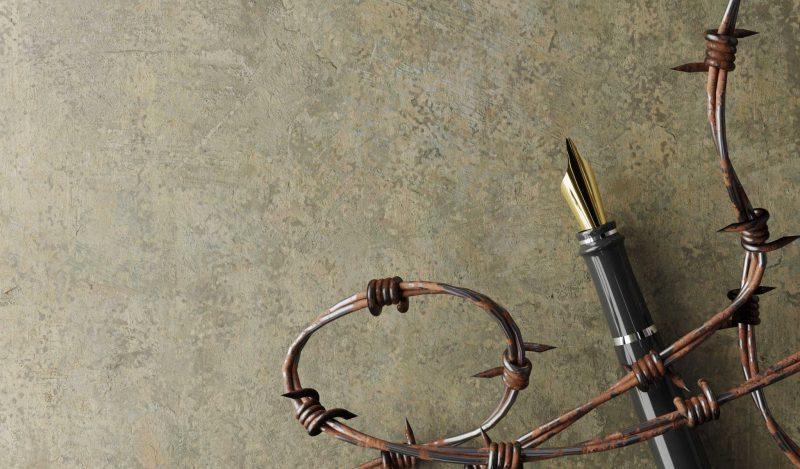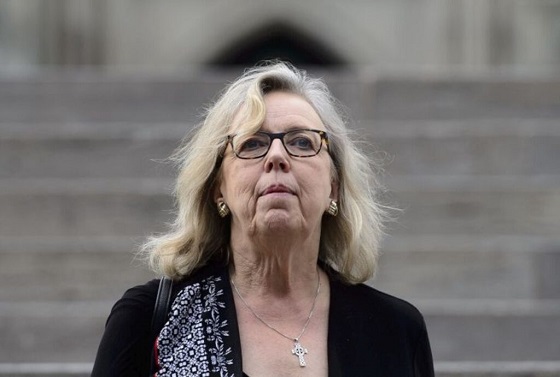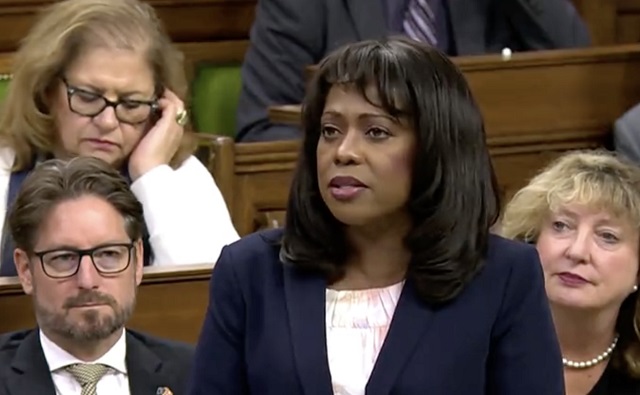Brownstone Institute
How Major Media Suppressed My COVID Journalism

From the Brownstone Institute
BY
The COVID-19 emergency has at last come to an end as even the most restrictive countries — the United States, most recently — have lifted draconian Covid mandates. Freedom has been restored, but the pandemic has left an indelible mark on the bedrock institutions of our society. The corruption of the FDA, CDC, the White House, and Big Pharma has been undeniably exposed — a topic I have exhaustively covered for over a year.
Notably, journalism — the filter through which ordinary people living busy lives come to understand the complex matrix of power, money, and influence — has also been exposed for its bizarre servility to public health decrees and pharmaceutical companies. Writing for the most prominent journalistic outlets since 2020, I saw the decay from the inside. Though I have been hesitant to share my experiences of colliding with the inner machinery of media — for my reputational and financial security — I now feel galvanized to lay it on the table after starting a new Substack with Dr. Jay Bhattacharya.
One of the reasons I unexpectedly found myself in the journalism industry was the real possibility of speaking truth to power, presenting radically novel perspectives, and challenging institutional orthodoxy.
My first major forays into the industry were on topics such as how my experiences with racism from childhood inform my view of race relations, how white guilt and identity politics corrupts our discourse, and how 2020 Black Lives Matter riots wreaked havoc in poor, minority communities.

Pieces that I’m perhaps most proud of are the explosion of inner-city violence in Minneapolis in the aftermath of George Floyd and the new phenomenon of Asian women out-earning white men in the US.
My heterodoxy and unwavering commitment to the truth — whether that made me look right-wing, left-wing, or just an artsy weirdo (at times) — didn’t land me a weekly New York Times column, but it did grant me spots in a number of top liberal and conservative-leaning outlets, such as the New York Post, the Globe and Mail, Foreign Policy Magazine, the Grammys (yes, the music awards — their online vertical), and others.
Until it didn’t.
Having taken the heretical line on race, gender, policing, I thought I was immunized from editorial censorship. But, as the pandemic became increasingly politicized through 2021 and 2022 with the rollout of vaccines and public mandates, our society seemed to plunge into further collective psychosis, as spiritual teacher Eckhart Tolle has persipaciously observed.
For the first year-and-a-half of the pandemic, I didn’t take any public stance on what was a complex epidemiological issue requiring legitimate expertise to navigate. Besides, I was regularly writing about race, BLM, and policing in the summer of 2020. Then, in the summer of 2021 Justin Trudeau and provincial leaders announced vaccine mandates across the country. Suddenly, going to the gym, restaurants, and large gatherings was conditional on taking a novel mRNA vaccine for a virus that posed less than a 0.003 percent mortality risk for people my age.
I started to examine whether this was the right medical decision for my health. Upon close scrutiny of the best available data, I came away thinking it was not. I didn’t think the Covid vaccine would be an instant death sentence for me, but I didn’t see clear evidence of benefit for healthy people in their 20s. It also just happened to be the case that I fell in the very demographic that was most at-risk of developing a serious vaccine side effect — myocarditis or pericarditis (cardiac inflammation).
Among the most rigorous, comprehensive data we have on vaccine myocarditis is from Dr. Katie Sharff who analyzed a database from Kaiser Permanente. She found a 1/1,862 rate of myocarditis after the second dose in young men ages 18 – 24. For boys ages 12 – 17, the rate was 1/2,650. Active surveillance monitoring in Hong Kong shows virtually identical figures.
Confused and looking for clarity, I reached out to Dr. Jay Bhattacharya — who was among the most sensible public health policy advocates throughout the pandemic — and he validated my serious concerns of vaccine safety and draconian public health policy more broadly.
Frustrated by the government coercing me into taking a medical procedure that was not in my best interest, I resolved to write about this injustice in the several outlets which had previously published my work.
Right away, I faced tremendous resistance of the kind that I never expected. The rejection I experienced when pitching a wide variety of pieces on Covid mandates — reported, opinionated, based on the views of credentialed scientific experts etc.— was unprecedented. Even editors who I deemed as allies — publishing polarizing pieces such as the “fallacies of white privilege” or why Robin DiAngelo’s last popular racism guidebook promotes a “dehumanizing form of condescension towards racial minorities” — were averse to my work questioning scientifically dubious vaccine mandate policies on the grounds of bodily autonomy and medical freedom.
Many editors explicitly stated their outlets were “pro-vaccine” and didn’t want to run anything that may promote an iota of “vaccine hesitancy” — even in young, healthy groups for which we still have no data on reduction in severe disease or death. One editor responded to my pitch on the lack of epidemiological basis for vaccine mandates with the following:
This paper has been encouraging Covid vaccination for everyone. We don’t want to promote vaccine hesitancy that will get people seriously ill and killed.
Journalists need to be responsible in not sowing distrust in public health guidelines that are meant to keep us safe.
Another editor made it painfully clear after a handful of unsuccessful pitches that the publication as a whole was not keen on publishing anything that deviated from the CDC and FDA’s universal vaccine advisory (vigorously critiqued by the likes of Vinay Prasad and Tracy Beth Høeg MD, PhD.).
I’m going to pass.
As I’ve said many times before, we are a pro-vaccination newspaper, and personally I just wish everyone would get vaccinated already. While I respect your decision not to do so (and I agree jail time for those who don’t is overkill), I’m not keen on op-eds that even appear like they’re arguing against vaccination for Covid or anything else.
Trying to figure out a way to capitalize on a hot news story — as every freelancer learns how to do — I started sending pitches on viral stories of athletes being barred from competition due to their personal choice not to get vaccinated. In response to my proposal on tennis star Novak Djokovic’s debacle, one editor expressed his utter contempt for Djokovic:
In no way do I want a piece supporting people who refuse to get vaccinated. In my opinion, people such as Djokovic, who refuse to get vaxxed, make their own beds and should lie in it.
They are not heroes.
On my pitch about NBA star Kyrie Irving, who had to sit out several games for the Brooklyn Nets because of some undefined risk he posed to society as an unvaccinated player, an editor I was very close with made her profound disagreement undoubtedly clear:
Sorry Rav, but I vehemently disagree with you on this issue. Feel free to pitch elsewhere.
Kyrie Irving refused to help the public get out of the pandemic and now he’s suffering the consequences. It’s on him.
On a couple of occasions, I attempted to cover the perpetually escalating Joe Rogan Covid controversy. In my several pitches, I took various angles such as how many credentialed scientific experts — such as Bhattacharya, Makary, Prasad, and others — were more in line with Rogan’s anti-mandate views than the government and public health agencies were. Here are two editor responses I received when pitching a story on the bizarre controversy of Rogan’s comments that young people in their 20s didn’t need to take the Covid vaccine (May 2021):
Rav, we are not interested in running stories like this.
I think Rogan is actively endangering the lives of children and young adults with his anti-vaccine propaganda — and you need to be more responsible in your coverage as a journalist.
I’m not interested in the Rogan story. It could too easily be construed as anti-vaccine and we want to steer well clear of that.
I don’t want any ambiguity on the issue.
One publication, whose whole mission has been from the start to expose and dismantle institutional orthodoxy, uncritically took the mainstream view on vaccine recommendations as gospel. This editor, who had “platformed” my work explaining the oft-justifiability of police shootings of highly violent, threatening suspects — which, again, was in line with their anti-mainstream view —opposed any view critical of vaccine mandates. In response to one of my pitches on the downplayed risk of vaccine-induced myocarditis in young men, he responded:
Rav, sorry but we’re not going to run any anti-vaccine pieces.
I think the risk is totally overblown and amplified by right-wing pundits who have no concern for public health. These are the safest vaccines we’ve ever had and virtually everyone seeks to benefit.
None of this was based on rigorous scientific analysis — it was all premised on a naive trust in public health authorities and pharmaceutical companies.
As it turns out, the mRNA vaccines are, by all current accounts, the most dangerous government-promoted pharmaceutical products in history. Fraiman and colleagues’ independent analysis of Pfizer and Moderna’s safety data in the medical journal Vaccine shows that mRNA covid vaccines are associated with a 1 in 800 adverse event rate — substantially higher than other vaccines on the market (typically in the range of 1 in a million adverse event rates).
[Note: this study does not negate the effectiveness of mRNA vaccines in reducing death and severe disease in elderly populations (for which we have good data). I personally recommended my grandparents to get vaccinated and was happy they followed through.]
Due to the increasing censorship I faced, I ended up self-publishing my vaccine-myocarditis investigations, including one story on how a 38-year-old law enforcement member in my area almost died from acute vaccine-induced myocarditis after he was forced to get double-jabbed against his will.
At a time when government officials and public health bureaucrats are actively misleading the public, it is the media’s crucial responsibility to hold them accountable. Unchecked power — when unrecognized by the masses — metastasizes and devolves into tyrannical control. This is how you get the FDA approving and recommending the new “bivalent” booster shot to all Americans — as young as 6 months old — based on lab-testing in eight mice (with the White House recklessly advertising on their behalf).
When the media fails, civilization begins to unwind. The powerful get away with more corruption and media homogeneity solidifies, congeals, and becomes increasingly treacherous to question.
This has been my experience over the past two years.
An industry already compromised in the age of Trump and wokeism completely fell apart during a global pandemic. My collisions with this inner machinery are not merely a story of left-wing media bias (a given fact for decades), but — as I alluded to several times — people working in even alternative and right-leaning media spaces refusing to air any form of refutation of authoritarian public health mandates.
This is why traditional left-versus-right paradigms are obsolete. Many “conservatives” bought the public health propaganda wholesale while a number of traditionally progressive thinkers — such as Russell Brand, Matt Taibbi, Jimmy Dore, and Glenn Greenwald (regardless of their personal medical decisions) — vigorously objected to Covid mandates on the basis of foundational, societal principles.
I have largely abstained from sharing my visceral feelings on the demoralizing rejection (and financial loss) I faced for two years as a previously welcomed journalist in major outlets, but suffice it to say I felt incredibly trapped, helpless, vexed, and lost. Some of the aforementioned editors recommended I stick to stories on “cancel culture,” “identity politics,” “race,” and the rest. While all those issues remain deeply concerning, the proposition of being pigeonholed in one specific topic while being censored in another that is far more alarming on a societal level (“Take the jab, or lose your job”) was repugnant to me.
I refuse to be censored.
I won’t perpetually write stories about wokeism spiralling out of control in liberal sectors of society in order to gain clicks and a steady paycheck on conservative websites who want to feed their readers only one narrative.
Today, I am no longer indignant and hopeless, waiting for one of my previous editors to offer me an opportunity again. I have now started my new, independent venture on this platform — The Illusion of Consensus — and am looking forward to bringing new, exciting content to my readers.
Thank you to those who helped share and amplify the several stories I independently wrote on my personal Substack (with a small audience and minimal financial gain) such as Jordan Peterson, Joe Rogan, and Glenn Greenwald.
As I progress in my ever-evolving journalistic path to expose the truth, I hope you will continue to support my work.
Republished from the author’s Substack
Brownstone Institute
The Unmasking of Vaccine Science

From the Brownstone Institute
By
I recently purchased Aaron Siri’s new book Vaccines, Amen. As I flipped though the pages, I noticed a section devoted to his now-famous deposition of Dr Stanley Plotkin, the “godfather” of vaccines.
I’d seen viral clips circulating on social media, but I had never taken the time to read the full transcript — until now.
Siri’s interrogation was methodical and unflinching…a masterclass in extracting uncomfortable truths.
A Legal Showdown
In January 2018, Dr Stanley Plotkin, a towering figure in immunology and co-developer of the rubella vaccine, was deposed under oath in Pennsylvania by attorney Aaron Siri.
The case stemmed from a custody dispute in Michigan, where divorced parents disagreed over whether their daughter should be vaccinated. Plotkin had agreed to testify in support of vaccination on behalf of the father.
What followed over the next nine hours, captured in a 400-page transcript, was extraordinary.
Plotkin’s testimony revealed ethical blind spots, scientific hubris, and a troubling indifference to vaccine safety data.
He mocked religious objectors, defended experiments on mentally disabled children, and dismissed glaring weaknesses in vaccine surveillance systems.
A System Built on Conflicts
From the outset, Plotkin admitted to a web of industry entanglements.
He confirmed receiving payments from Merck, Sanofi, GSK, Pfizer, and several biotech firms. These were not occasional consultancies but long-standing financial relationships with the very manufacturers of the vaccines he promoted.
Plotkin appeared taken aback when Siri questioned his financial windfall from royalties on products like RotaTeq, and expressed surprise at the “tone” of the deposition.
Siri pressed on: “You didn’t anticipate that your financial dealings with those companies would be relevant?”
Plotkin replied: “I guess, no, I did not perceive that that was relevant to my opinion as to whether a child should receive vaccines.”
The man entrusted with shaping national vaccine policy had a direct financial stake in its expansion, yet he brushed it aside as irrelevant.
Contempt for Religious Dissent
Siri questioned Plotkin on his past statements, including one in which he described vaccine critics as “religious zealots who believe that the will of God includes death and disease.”
Siri asked whether he stood by that statement. Plotkin replied emphatically, “I absolutely do.”
Plotkin was not interested in ethical pluralism or accommodating divergent moral frameworks. For him, public health was a war, and religious objectors were the enemy.
He also admitted to using human foetal cells in vaccine production — specifically WI-38, a cell line derived from an aborted foetus at three months’ gestation.
Siri asked if Plotkin had authored papers involving dozens of abortions for tissue collection. Plotkin shrugged: “I don’t remember the exact number…but quite a few.”
Plotkin regarded this as a scientific necessity, though for many people — including Catholics and Orthodox Jews — it remains a profound moral concern.
Rather than acknowledging such sensitivities, Plotkin dismissed them outright, rejecting the idea that faith-based values should influence public health policy.
That kind of absolutism, where scientific aims override moral boundaries, has since drawn criticism from ethicists and public health leaders alike.
As NIH director Jay Bhattacharya later observed during his 2025 Senate confirmation hearing, such absolutism erodes trust.
“In public health, we need to make sure the products of science are ethically acceptable to everybody,” he said. “Having alternatives that are not ethically conflicted with foetal cell lines is not just an ethical issue — it’s a public health issue.”
Safety Assumed, Not Proven
When the discussion turned to safety, Siri asked, “Are you aware of any study that compares vaccinated children to completely unvaccinated children?”
Plotkin replied that he was “not aware of well-controlled studies.”
Asked why no placebo-controlled trials had been conducted on routine childhood vaccines such as hepatitis B, Plotkin said such trials would be “ethically difficult.”
That rationale, Siri noted, creates a scientific blind spot. If trials are deemed too unethical to conduct, then gold-standard safety data — the kind required for other pharmaceuticals — simply do not exist for the full childhood vaccine schedule.
Siri pointed to one example: Merck’s hepatitis B vaccine, administered to newborns. The company had only monitored participants for adverse events for five days after injection.
Plotkin didn’t dispute it. “Five days is certainly short for follow-up,” he admitted, but claimed that “most serious events” would occur within that time frame.
Siri challenged the idea that such a narrow window could capture meaningful safety data — especially when autoimmune or neurodevelopmental effects could take weeks or months to emerge.
Siri pushed on. He asked Plotkin if the DTaP and Tdap vaccines — for diphtheria, tetanus and pertussis — could cause autism.
“I feel confident they do not,” Plotkin replied.
But when shown the Institute of Medicine’s 2011 report, which found the evidence “inadequate to accept or reject” a causal link between DTaP and autism, Plotkin countered, “Yes, but the point is that there were no studies showing that it does cause autism.”
In that moment, Plotkin embraced a fallacy: treating the absence of evidence as evidence of absence.
“You’re making assumptions, Dr Plotkin,” Siri challenged. “It would be a bit premature to make the unequivocal, sweeping statement that vaccines do not cause autism, correct?”
Plotkin relented. “As a scientist, I would say that I do not have evidence one way or the other.”
The MMR
The deposition also exposed the fragile foundations of the measles, mumps, and rubella (MMR) vaccine.
When Siri asked for evidence of randomised, placebo-controlled trials conducted before MMR’s licensing, Plotkin pushed back: “To say that it hasn’t been tested is absolute nonsense,” he said, claiming it had been studied “extensively.”
Pressed to cite a specific trial, Plotkin couldn’t name one. Instead, he gestured to his own 1,800-page textbook: “You can find them in this book, if you wish.”
Siri replied that he wanted an actual peer-reviewed study, not a reference to Plotkin’s own book. “So you’re not willing to provide them?” he asked. “You want us to just take your word for it?”
Plotkin became visibly frustrated.
Eventually, he conceded there wasn’t a single randomised, placebo-controlled trial. “I don’t remember there being a control group for the studies, I’m recalling,” he said.
The exchange foreshadowed a broader shift in public discourse, highlighting long-standing concerns that some combination vaccines were effectively grandfathered into the schedule without adequate safety testing.
In September this year, President Trump called for the MMR vaccine to be broken up into three separate injections.
The proposal echoed a view that Andrew Wakefield had voiced decades earlier — namely, that combining all three viruses into a single shot might pose greater risk than spacing them out.
Wakefield was vilified and struck from the medical register. But now, that same question — once branded as dangerous misinformation — is set to be re-examined by the CDC’s new vaccine advisory committee, chaired by Martin Kulldorff.
The Aluminium Adjuvant Blind Spot
Siri next turned to aluminium adjuvants — the immune-activating agents used in many childhood vaccines.
When asked whether studies had compared animals injected with aluminium to those given saline, Plotkin conceded that research on their safety was limited.
Siri pressed further, asking if aluminium injected into the body could travel to the brain. Plotkin replied, “I have not seen such studies, no, or not read such studies.”
When presented with a series of papers showing that aluminium can migrate to the brain, Plotkin admitted he had not studied the issue himself, acknowledging that there were experiments “suggesting that that is possible.”
Asked whether aluminium might disrupt neurological development in children, Plotkin stated, “I’m not aware that there is evidence that aluminum disrupts the developmental processes in susceptible children.”
Taken together, these exchanges revealed a striking gap in the evidence base.
Compounds such as aluminium hydroxide and aluminium phosphate have been injected into babies for decades, yet no rigorous studies have ever evaluated their neurotoxicity against an inert placebo.
This issue returned to the spotlight in September 2025, when President Trump pledged to remove aluminium from vaccines, and world-leading researcher Dr Christopher Exley renewed calls for its complete reassessment.
A Broken Safety Net
Siri then turned to the reliability of the Vaccine Adverse Event Reporting System (VAERS) — the primary mechanism for collecting reports of vaccine-related injuries in the United States.
Did Plotkin believe most adverse events were captured in this database?
“I think…probably most are reported,” he replied.
But Siri showed him a government-commissioned study by Harvard Pilgrim, which found that fewer than 1% of vaccine adverse events are reported to VAERS.
“Yes,” Plotkin said, backtracking. “I don’t really put much faith into the VAERS system…”
Yet this is the same database officials routinely cite to claim that “vaccines are safe.”
Ironically, Plotkin himself recently co-authored a provocative editorial in the New England Journal of Medicine, conceding that vaccine safety monitoring remains grossly “inadequate.”
Experimenting on the Vulnerable
Perhaps the most chilling part of the deposition concerned Plotkin’s history of human experimentation.
“Have you ever used orphans to study an experimental vaccine?” Siri asked.
“Yes,” Plotkin replied.
“Have you ever used the mentally handicapped to study an experimental vaccine?” Siri asked.
“I don’t recollect…I wouldn’t deny that I may have done so,” Plotkin replied.
Siri cited a study conducted by Plotkin in which he had administered experimental rubella vaccines to institutionalised children who were “mentally retarded.”
Plotkin stated flippantly, “Okay well, in that case…that’s what I did.”
There was no apology, no sign of ethical reflection — just matter-of-fact acceptance.
Siri wasn’t done.
He asked if Plotkin had argued that it was better to test on those “who are human in form but not in social potential” rather than on healthy children.
Plotkin admitted to writing it.
Siri established that Plotkin had also conducted vaccine research on the babies of imprisoned mothers, and on colonised African populations.
Plotkin appeared to suggest that the scientific value of such studies outweighed the ethical lapses—an attitude that many would interpret as the classic ‘ends justify the means’ rationale.
But that logic fails the most basic test of informed consent. Siri asked whether consent had been obtained in these cases.
“I don’t remember…but I assume it was,” Plotkin said.
Assume?
This was post-Nuremberg research. And the leading vaccine developer in America couldn’t say for sure whether he had properly informed the people he experimented on.
In any other field of medicine, such lapses would be disqualifying.
A Casual Dismissal of Parental Rights
Plotkin’s indifference to experimenting on disabled children didn’t stop there.
Siri asked whether someone who declined a vaccine due to concerns about missing safety data should be labelled “anti-vax.”
Plotkin replied, “If they refused to be vaccinated themselves or refused to have their children vaccinated, I would call them an anti-vaccination person, yes.”
Plotkin was less concerned about adults making that choice for themselves, but he had no tolerance for parents making those choices for their own children.
“The situation for children is quite different,” said Plotkin, “because one is making a decision for somebody else and also making a decision that has important implications for public health.”
In Plotkin’s view, the state held greater authority than parents over a child’s medical decisions — even when the science was uncertain.
The Enabling of Figures Like Plotkin
The Plotkin deposition stands as a case study in how conflicts of interest, ideology, and deference to authority have corroded the scientific foundations of public health.
Plotkin is no fringe figure. He is celebrated, honoured, and revered. Yet he promotes vaccines that have never undergone true placebo-controlled testing, shrugs off the failures of post-market surveillance, and admits to experimenting on vulnerable populations.
This is not conjecture or conspiracy — it is sworn testimony from the man who helped build the modern vaccine program.
Now, as Health Secretary Robert F. Kennedy, Jr. reopens long-dismissed questions about aluminium adjuvants and the absence of long-term safety studies, Plotkin’s once-untouchable legacy is beginning to fray.
Republished from the author’s Substack
Brownstone Institute
Bizarre Decisions about Nicotine Pouches Lead to the Wrong Products on Shelves

From the Brownstone Institute
A walk through a dozen convenience stores in Montgomery County, Pennsylvania, says a lot about how US nicotine policy actually works. Only about one in eight nicotine-pouch products for sale is legal. The rest are unauthorized—but they’re not all the same. Some are brightly branded, with uncertain ingredients, not approved by any Western regulator, and clearly aimed at impulse buyers. Others—like Sweden’s NOAT—are the opposite: muted, well-made, adult-oriented, and already approved for sale in Europe.
Yet in the United States, NOAT has been told to stop selling. In September 2025, the Food and Drug Administration (FDA) issued the company a warning letter for offering nicotine pouches without marketing authorization. That might make sense if the products were dangerous, but they appear to be among the safest on the market: mild flavors, low nicotine levels, and recyclable paper packaging. In Europe, regulators consider them acceptable. In America, they’re banned. The decision looks, at best, strange—and possibly arbitrary.
What the Market Shows
My October 2025 audit was straightforward. I visited twelve stores and recorded every distinct pouch product visible for sale at the counter. If the item matched one of the twenty ZYN products that the FDA authorized in January, it was counted as legal. Everything else was counted as illegal.
Two of the stores told me they had recently received FDA letters and had already removed most illegal stock. The other ten stores were still dominated by unauthorized products—more than 93 percent of what was on display. Across all twelve locations, about 12 percent of products were legal ZYN, and about 88 percent were not.
The illegal share wasn’t uniform. Many of the unauthorized products were clearly high-nicotine imports with flashy names like Loop, Velo, and Zimo. These products may be fine, but some are probably high in contaminants, and a few often with very high nicotine levels. Others were subdued, plainly meant for adult users. NOAT was a good example of that second group: simple packaging, oat-based filler, restrained flavoring, and branding that makes no effort to look “cool.” It’s the kind of product any regulator serious about harm reduction would welcome.
Enforcement Works
To the FDA’s credit, enforcement does make a difference. The two stores that received official letters quickly pulled their illegal stock. That mirrors the agency’s broader efforts this year: new import alerts to detain unauthorized tobacco products at the border (see also Import Alert 98-06), and hundreds of warning letters to retailers, importers, and distributors.
But effective enforcement can’t solve a supply problem. The list of legal nicotine-pouch products is still extremely short—only a narrow range of ZYN items. Adults who want more variety, or stores that want to meet that demand, inevitably turn to gray-market suppliers. The more limited the legal catalog, the more the illegal market thrives.
Why the NOAT Decision Appears Bizarre
The FDA’s own actions make the situation hard to explain. In January 2025, it authorized twenty ZYN products after finding that they contained far fewer harmful chemicals than cigarettes and could help adult smokers switch. That was progress. But nine months later, the FDA has approved nothing else—while sending a warning letter to NOAT, arguably the least youth-oriented pouch line in the world.
The outcome is bad for legal sellers and public health. ZYN is legal; a handful of clearly risky, high-nicotine imports continue to circulate; and a mild, adult-market brand that meets European safety and labeling rules is banned. Officially, NOAT’s problem is procedural—it lacks a marketing order. But in practical terms, the FDA is punishing the very design choices it claims to value: simplicity, low appeal to minors, and clean ingredients.
This approach also ignores the differences in actual risk. Studies consistently show that nicotine pouches have far fewer toxins than cigarettes and far less variability than many vapes. The biggest pouch concerns are uneven nicotine levels and occasional traces of tobacco-specific nitrosamines, depending on manufacturing quality. The serious contamination issues—heavy metals and inconsistent dosage—belong mostly to disposable vapes, particularly the flood of unregulated imports from China. Treating all “unauthorized” products as equally bad blurs those distinctions and undermines proportional enforcement.
A Better Balance: Enforce Upstream, Widen the Legal Path
My small Montgomery County survey suggests a simple formula for improvement.
First, keep enforcement targeted and focused on suppliers, not just clerks. Warning letters clearly change behavior at the store level, but the biggest impact will come from auditing distributors and importers, and stopping bad shipments before they reach retail shelves.
Second, make compliance easy. A single-page list of authorized nicotine-pouch products—currently the twenty approved ZYN items—should be posted in every store and attached to distributor invoices. Point-of-sale systems can block barcodes for anything not on the list, and retailers could affirm, once a year, that they stock only approved items.
Third, widen the legal lane. The FDA launched a pilot program in September 2025 to speed review of new pouch applications. That program should spell out exactly what evidence is needed—chemical data, toxicology, nicotine release rates, and behavioral studies—and make timely decisions. If products like NOAT meet those standards, they should be authorized quickly. Legal competition among adult-oriented brands will crowd out the sketchy imports far faster than enforcement alone.
The Bottom Line
Enforcement matters, and the data show it works—where it happens. But the legal market is too narrow to protect consumers or encourage innovation. The current regime leaves a few ZYN products as lonely legal islands in a sea of gray-market pouches that range from sensible to reckless.
The FDA’s treatment of NOAT stands out as a case study in inconsistency: a quiet, adult-focused brand approved in Europe yet effectively banned in the US, while flashier and riskier options continue to slip through. That’s not a public-health victory; it’s a missed opportunity.
If the goal is to help adult smokers move to lower-risk products while keeping youth use low, the path forward is clear: enforce smartly, make compliance easy, and give good products a fair shot. Right now, we’re doing the first part well—but failing at the second and third. It’s time to fix that.
-

 Energy19 hours ago
Energy19 hours agoA look inside the ‘floatel’ housing B.C.’s LNG workforce
-

 International1 day ago
International1 day agoFBI may have finally nabbed the Jan. 6 pipe bomber
-

 COVID-191 day ago
COVID-191 day agoUniversity of Colorado will pay $10 million to staff, students for trying to force them to take COVID shots
-

 Business2 days ago
Business2 days agoCanada’s climate agenda hit business hard but barely cut emissions
-

 espionage1 day ago
espionage1 day agoDigital messages reportedly allege Chinese police targeted dissident who died suspiciously near Vancouver
-

 Energy19 hours ago
Energy19 hours agoELZABETH MAY HAS IT WRONG: An Alberta to Prince Rupert Oil Pipeline Will Contribute to Greater Global Oil Tanker Safety
-

 National20 hours ago
National20 hours agoAlberta will use provincial laws to stop Canadian gov’t from trying to confiscate legal firearms
-

 Censorship Industrial Complex2 days ago
Censorship Industrial Complex2 days agoConservative MP Leslyn Lewis slams Liberal plan targeting religious exemption in hate speech bil






